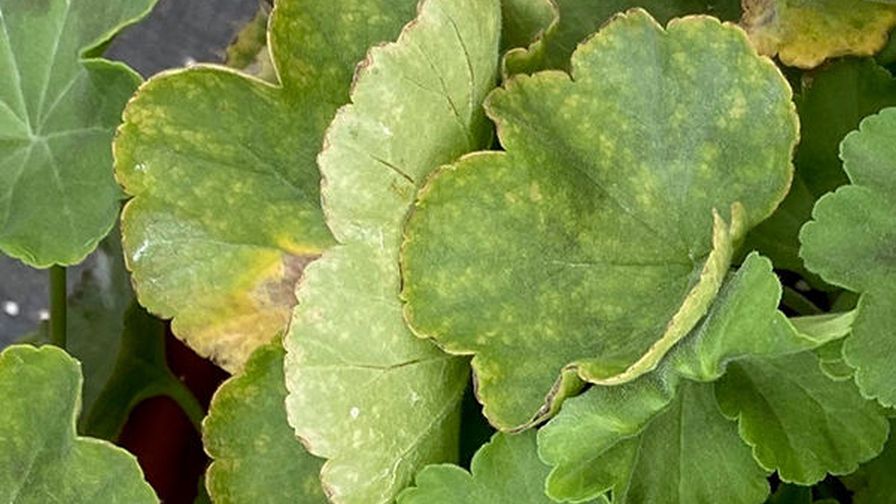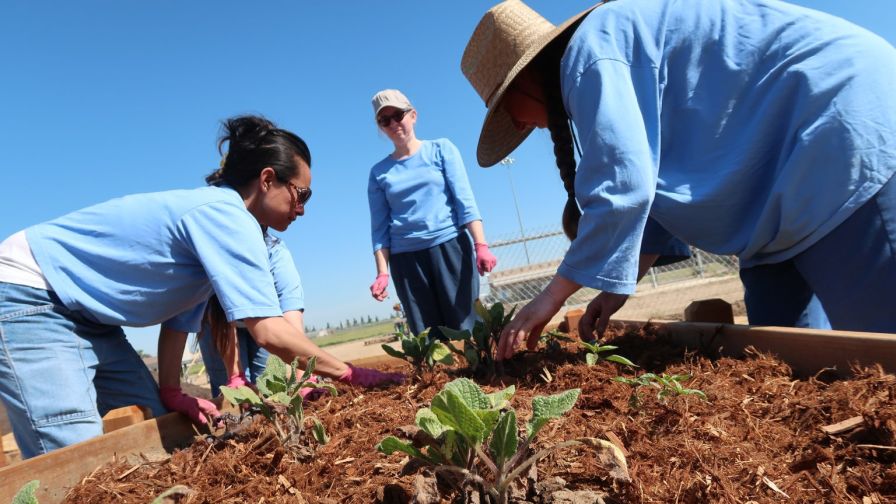Researchers Aim to Quash Spread of Rose Rosette Disease

Texas A&M AgriLife photo
Texas A&M AgriLife is leading a team of researchers to alleviate the estimated $10 million in annual disease-related loss to the rose industry due to rose rosette disease.
“The goal of our latest project is to meet the increasing demand for carefree and sustainable roses that require fewer inputs, are resistant to biotic and abiotic stresses, and have high ornamental quality,” says David Byrne, Ph.D.
Byrne, the Basye Chair in Rose Genetics, is co-leading the new project with Oscar Riera-Lizarazu, Ph.D., both Texas A&M AgriLife Research rose geneticists in the Texas A&M Department of Horticultural Sciences in the College of Agriculture and Life Sciences.
Their new project, “Developing Sustainable Rose Landscapes via Rose Rosette Disease Education, Socioeconomic Assessments, and Breeding RRD-Resistant Roses with Stable Black Spot Resistance,” received $4 million in funding from the USDA Specialty Crop Research Initiative and is outlined in a recent AgriLife Today post.
Rose rosette disease, caused by the rose rosette virus, is a significant threat to cultivation and production throughout the U.S. Black spot disease is the major fungal disease of field-grown roses throughout the world.
“These are the two most damaging rose diseases, and resistance to both is essential in a sustainable cultivar,” Byrne says.
Currently, most cultivated roses are susceptible to these diseases, Byrne says, and thus the transport and distribution of infected asymptomatic plants propagates the disease spread. Already, plantings have been devastated in the Midwest and Eastern seaboard and major landscape firms are stopping the use of roses in some regions.
“We are concerned rose rosette disease has the potential to devastate the major rose production regions on the West Coast, Arizona, and Florida if it is spread to those regions,” he says.
The project’s long-term goal is to develop sustainable landscapes based on cultivars resistant to rose rosette and black spot diseases. This involves combining traditional plant breeding, with field evaluation sites in Texas, Tennessee, and Oklahoma, with molecular genetics to accelerate the process of stacking multiple copies of multiple resistance genes into a rose. The approach should at least double the rate of progress, reducing the time it takes to develop highly disease-resistant, sustainable plants for gardens, Byrne says.
As management options are developed, the economics specialists on the team will assess the socio-economic impacts of the various management practices to provide decision support for the industry and gardeners.
“These sustainable best management practices will reduce human and environmental exposure to agrochemicals and will be designed to avoid the introduction of the disease into regions that currently do not have it and to manage its severity in infested regions,” Byrne says.
The ultimate goal is the restoration of healthy rose collections to botanical gardens, public parks and private landscapes to improve the aesthetics, thus resulting in improved wellbeing and property values.
Continue reading at AgriLifeToday.com. Keep up with more information on rose rosette disease here.











